Meet the Artists From the 2017 Alberta Biennial of Contemporary Arts
The 2017 Alberta Biennial of Contemporary Art, entitled for the time being, is curated by Peta Rake and Kristy Trinier, and jointly organized by the Art Gallery of Alberta and Banff Centre for Arts and Creativity. The Biennial features new works by 24 Alberta artists, split between the Art Gallery of Alberta in Edmonton and the Walter Phillips Gallery at Banff Centre.
The opening reception in Banff takes place Saturday, June 24 at 6 p.m. at the Walter Phillips Gallery. Get to know the artists featured below, then come see their work!

b. Calgary, based in Calgary, Alberta
Ashley Bedet came back to Calgary, Alberta, where she was born. Bedet is the product of many very different worlds reproducing, meeting difference, and then reproducing again. That makes her the product of at least four distinct separate paths. She graduated from NSCAD University in 2014 and has been slowly making and showing work since.
This work illustrates the cyclical evolution of energy in a galaxy’s life span. Persistence of energy and matter in a continuum of its metamorphosis. No body, moon, planet, star or dust, exists in isolation—the energy exerted unto and from an entity will effect a greater whole.
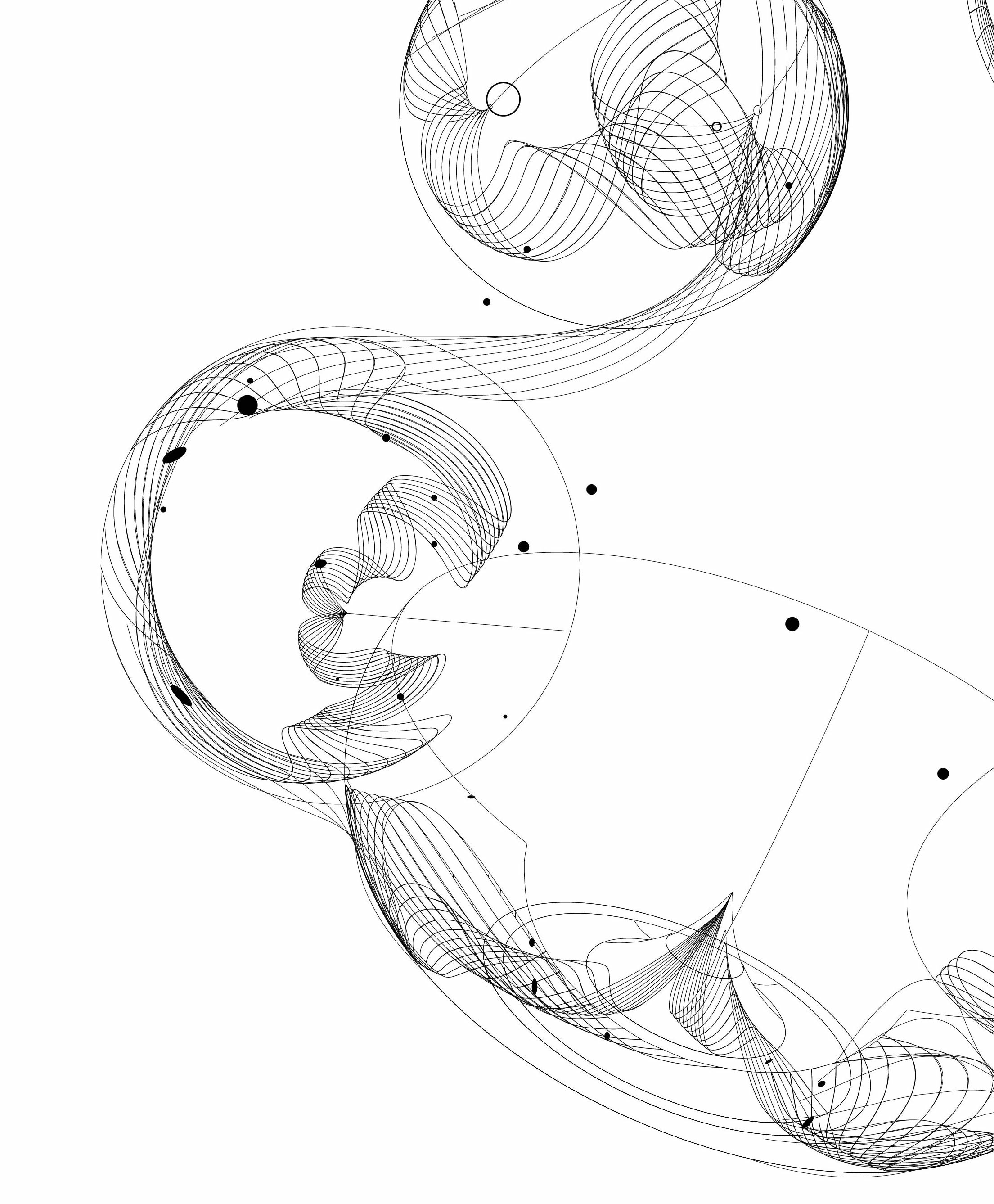
Rendering of Ashley Bedet’s vinyl installation Selection occurs from the onset — Persistence in continuum. A soft moon turns hard, then turns to a planet. Its star collapses and a new formation persists, 2017.
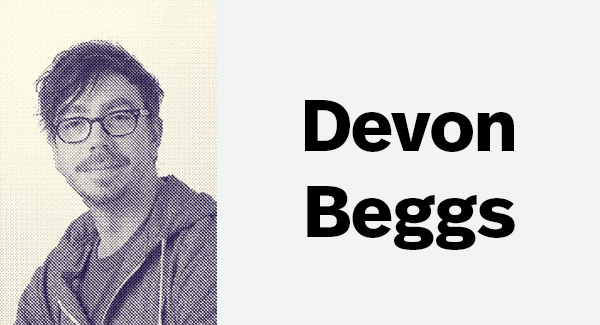
b. Edmonton, based in Edmonton, Alberta
Devon Beggs was born in Edmonton, Alberta in 1983. Beggs’ works predominantly with textiles and fibres, but also incorporates sound, video, performance and installation into his practice. Beggs completed an MFA at Concordia University in Montreal in 2011 and currently lives and works in Edmonton. He has exhibited his work at Parisian Laundry and Art Mûr (both Montreal), Gallery Atsui (Vancouver) and was included in Future Station: 2015 Biennial of Contemporary Art at the Art Gallery of Alberta (Edmonton).
The purpose of Echo’s Chorus is to bring the viewer to a state of transcendence or spiritual ecstasy through a sensory overload of sound and imagery. The soundtrack for this video incorporates distortion, reverb and echo in a way that is both assaultive and seductive, emphasizing the physical effects of sound on the body. The video uses computer generated images to create a virtual space occupied by impossible landscapes and strange figures. Repetition, echo, multiplicity, and the infinite are central themes in this work, referencing experimental music, early CGI cartoons, cult rituals, and performances in popular culture.
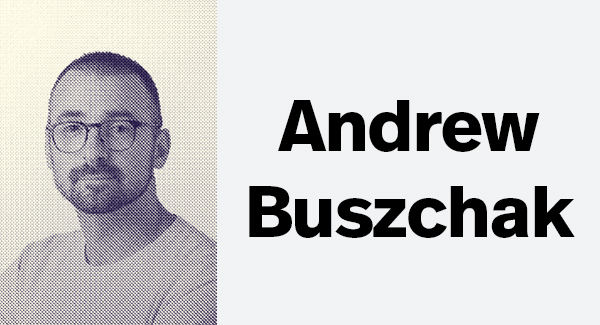
b. Brantford, Ontario, based in Edmonton, Alberta
Andrew Buszchak is an interdisciplinary artist working in video, print, and exchange, and holds a BFA from NSCAD University. In 2015, he participated in the Art Gallery of Alberta’s Do It Yourself: Collectivity and Collaboration in Edmonton and his durational office light installation, Beacon, was produced for Edmonton’s inaugural Nuit Blanche. Other engagements of note with Edmonton’s arts community include his limited edition woodblock print accompaniment to the Society of Northern Alberta Printmakers’ spring 2014 edition of SNAPline, and his performance Custodial Walk (2014, in collaboration with Émilienne Gervais), presented by The Drawing Room.
What is the Secret to Infinite Wealth? presents two statements that hover around the middle of a set of quadrants: tautology, contradiction, the obscure and the obtuse. Both statements are offered as potential hints to the imagined secret to infinite wealth, though both are also firmly uninformative. As the question in the title is tempting yet unrealistic, these statements offer little in the way of a straightforward answer, but hopefully help to complicate the viewer’s personal understanding of wealth in their own lives.
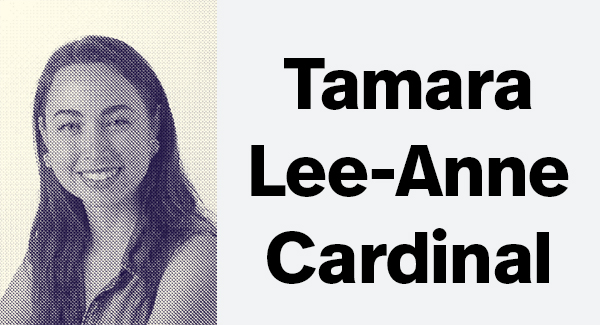
b. Lloydminster, Saskatchewan, based in Saddle Lake Cree Nation/Calgary, Alberta
Tamara Lee-Anne Cardinal is a multi-media artist, community activist, oskâpêwis, storyteller and life-long learner. Born and raised in Lloydminster, Saskatchewan, she now lives in Calgary, Alberta, and traces her ancestral roots to Saddle Lake Cree Nation. Since graduating from the Alberta College of Art + Design in 2015, she attended Culture Camp at Blue Quills First Nations University, participated in Emily Carr University of Art + Design’s Urban Access to Aboriginal Art Program, was awarded the BMO 1st Art National Award and has attended the Indigenous Visual + Digital Arts Residency 2016 in Banff, Alberta. Her artwork continues to be a reflection of the teachings she receives along her journey, inviting all people to become a part of the process.
The star blanket, once used as an identifier in the tribe to signal the Old Ones, now can be offered through celebration or achievement. In the midst of understanding what it means to be an “Indigenous Canadian” within the 150 year anniversary of Canada’s “birth”, Akohp: A Blanket came to be. Carefully working with precious materials such as herbs and hair used within ceremony, the artist incorporates them into the hand-made paper process. These particular hand-stitched leaves draw together traditional knowledge highlighting the seven sacred teachings, seven directions, and women’s teachings, steering away from the colonial structure of written policy
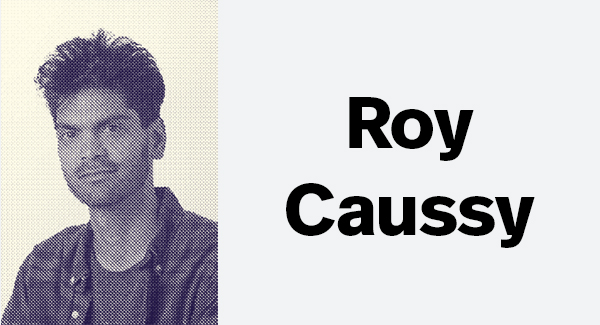
b. Hamilton, Ontario, based in Lethbridge, Alberta
Roy Caussy was born 1981 in Hamilton, Ontario. He received his BFA from the Nova Scotia College of Art & Design in 2006, and successfully completed his MFA at the University of Lethbridge in 2015. Caussy’s group exhibitions include Art Gallery of Hamilton (Hamilton), Cambridge Galleries (Cambridge), eyelevel gallery (Halifax), Southern Alberta Art Gallery (Lethbridge) and Centre A (Vancouver). Caussy has also attended residencies across Canada including Banff Centre for the Arts and Creativity (Banff) and the Medalta International Artists in Residence (Medicine Hat). Roy would like to thank the Alberta Foundation for the Arts for their generous support in the production of the work for the Alberta Biennial.
Caussy’s Kalispell (Mataji) takes its name from the ten-limbed Hindu Goddess Kali, who is associated with the dualities of death as well as motherhood. The works’ title is also a reference to the small town of Kalispell, Montana, the once-home of L. Ron Hubbard, the infamous founder of Scientology. The shrine-like platform and objects gesture to an international Indian diaspora and the artists own familial migrant experience in Canada. Kalispell (Mataji) and Rock My Religion (after Graham) materially expose references from dominant mainstream culture with coded and appropriated references to Hinduism, such as the triangle form intrinsic to the Goddess Kali. Caussy’s process-based work is a non-hierarchical exploration on the absurdity of the majority of human activity, musing upon solitude, ego, and death
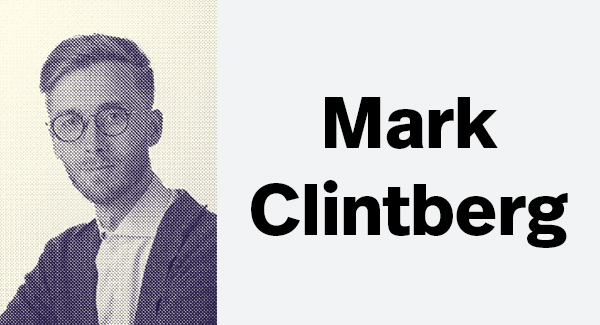
b. Edmonton, based in Calgary, Alberta
Mark Clintberg is an artist who works in the field of art history. He earned his Ph.D. at Concordia University in 2013, and has also studied at Oxford University, the Alberta College of Art + Design, and the Nova Scotia College of Art & Design. Solo exhibitions of his work have recently occurred at Artspace (Peterborough), Pierre-François Ouellette art contemporain (Montreal), and the Illingworth Kerr Gallery (Calgary). He has contributed to group exhibitions at the Dunlop Art Gallery (Regina), Locust Projects (Miami), the Art Gallery of Nova Scotia (Halifax), and Centre des arts actuels Skol (Montreal).
Do I still cross your mind? asks visitors to the Alberta Biennial to navigate components of the exhibition using one of a number of reflective metal serving trays. This project recalls the display strategies used in many museums that have ceiling frescos and murals: to aid the viewer’s perspective on such artworks, institutions distribute mirrored panels to visitors, which viewers look down into to perceive what is above them. This strategy grants a view that is reversed, distorted, and theoretically queer. This project similarly offers a look awry at assembled artworks in the Biennial, asking visitors to explore the space keeping in mind the simple interrogatory directive “Do I still cross your mind?”

Installation view of Mark Clintberg's Do I still cross your mind in Banff Centre's Eric Harvie West Lobby
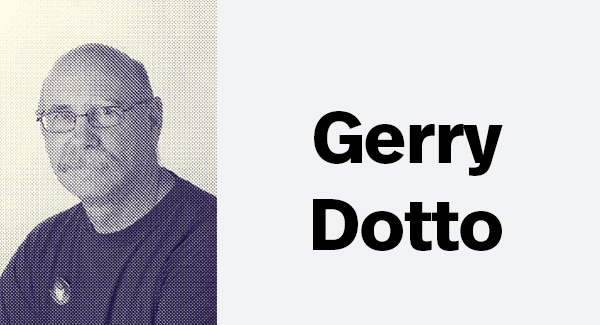
b. Edmonton, based in Sherwood Park, Alberta
Gerry Dotto lives and works in Sherwood Park outside of Edmonton, Alberta. He attended the Alberta College of Art where he received his undergraduate in 1981. Dotto’s practice includes printmaking, mixed-media, collage and photography. His work has been shown in group exhibitions in New York, Vancouver, Edmonton and Toronto and most recently, in the Salt Spring National Art Prize exhibition. His solo exhibitions include Flow of Traffic Theory at the Art Gallery of St. Albert (2016); Daffodil Gallery (2012) and Latitude53 (2010). His work is held in the public collections of Esso Petroleum Corporation, Alberta Foundation for the Arts, and Bruce Peel Special Collections Library. His work has been featured in publications such as Manifest Gallery 3rd and 5th International Photography Annuals, and PrairieSeen Notes.
Husband and Wife is a paper-based work based on cut and torn pieces of consumer packaging from a collection of recycled materials. The work maintains the interior components of product and package design, by altering and scaling the proofing/registration marks. Dotto’s works are named based on his perception of them, a phenomenon called pareidolia; a psychological phenomenon involving a stimulus wherein the mind perceives a familiar pattern of something where none exists.
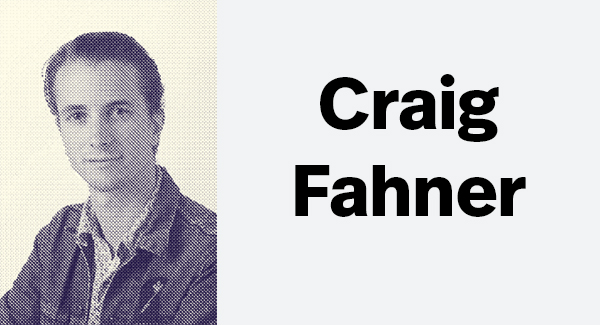
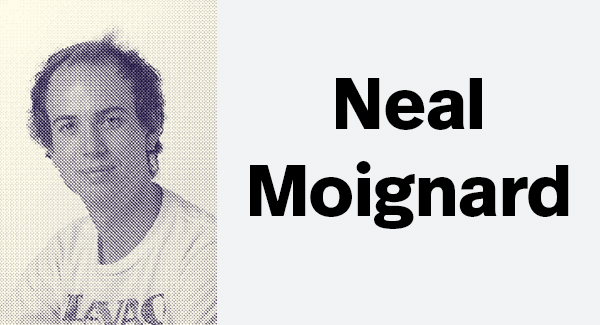
b. Calgary, based in Calgary, Alberta
& b. Adelaide, Australia, based in Calgary, Alberta
Craig Fahner is an artist and musician from Calgary, Alberta. His electronic, video and sound-based works reimagine electronic systems, generating experiences that reflect on the role of technology in our culture. Fahner’s works have been exhibited in various venues internationally, including the 8-11 Gallery (Toronto), Museo de la Ciudad (Queretaro, Mexico) and the Device Art Triennial (Zagreb, Croatia). In 2010, he received the Disney Memorial Pausch Fellowship to pursue graduate studies at Carnegie Mellon University (Pittsburgh), where he received his MFA in 2013. He has been awarded project grants from the Canada Council for the Arts and the Alberta Foundation for the Arts. Fahner currently leads classes in Media Arts and Digital Technologies at the Alberta College of Art + Design and in the Art Department at the University of Calgary.
Neal Moignard is an animator, visual artist, and musician based in Calgary, Alberta. His practice works across many disciplines and mediums, employing drawing, design, installation, CG, traditional animation, video, sound, performance, and cinema in attempts to subvert modern technologies in order to describe the ineffable. Moignard has exhibited works and screened his films at venues across Canada and internationally, including the 2012 Nuit Blanche festival in Toronto, the Atomic Testing Museum in Nevada, and the Beginning Festival in St. Petersburg, Russia. His animated short, Mud, was produced through the National Film Board’s Hothouse program in 2014. Moignard is currently pursuing his MFA at the University of Oregon.
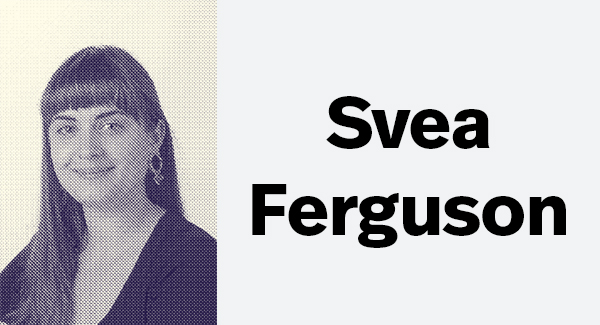
b. Calgary, based in Calgary, Alberta
Svea Ferguson is a Calgary-based sculptor and installation artist with a BFA from the Alberta College of Art + Design. Her work has been exhibited at Barbara Edwards Contemporary, Stride Gallery, Herringer Kiss Gallery and the Esker Foundation project space (all in Calgary) as well as Division Gallery and Justina M. Barnicke Gallery, (Toronto). She was named the provincial recipient for Alberta for the 2015 BMO 1st Art Prize. Ferguson’s work is included in private and permanent collections of Banff Centre for Arts and Creativity and TD Canada Trust.
Here, a lost connection is sought. How can we discover our forgotten histories, those that were never told, but remain present in the landscape? Mapping the relationship between wo/man and nature, this work looks to explore the romantic notions of place and experience in the Canadian wilderness. The artist would like to thank the Alberta Foundation for the Arts and Deerfoot Carpet and Flooring for their generous support of this project.
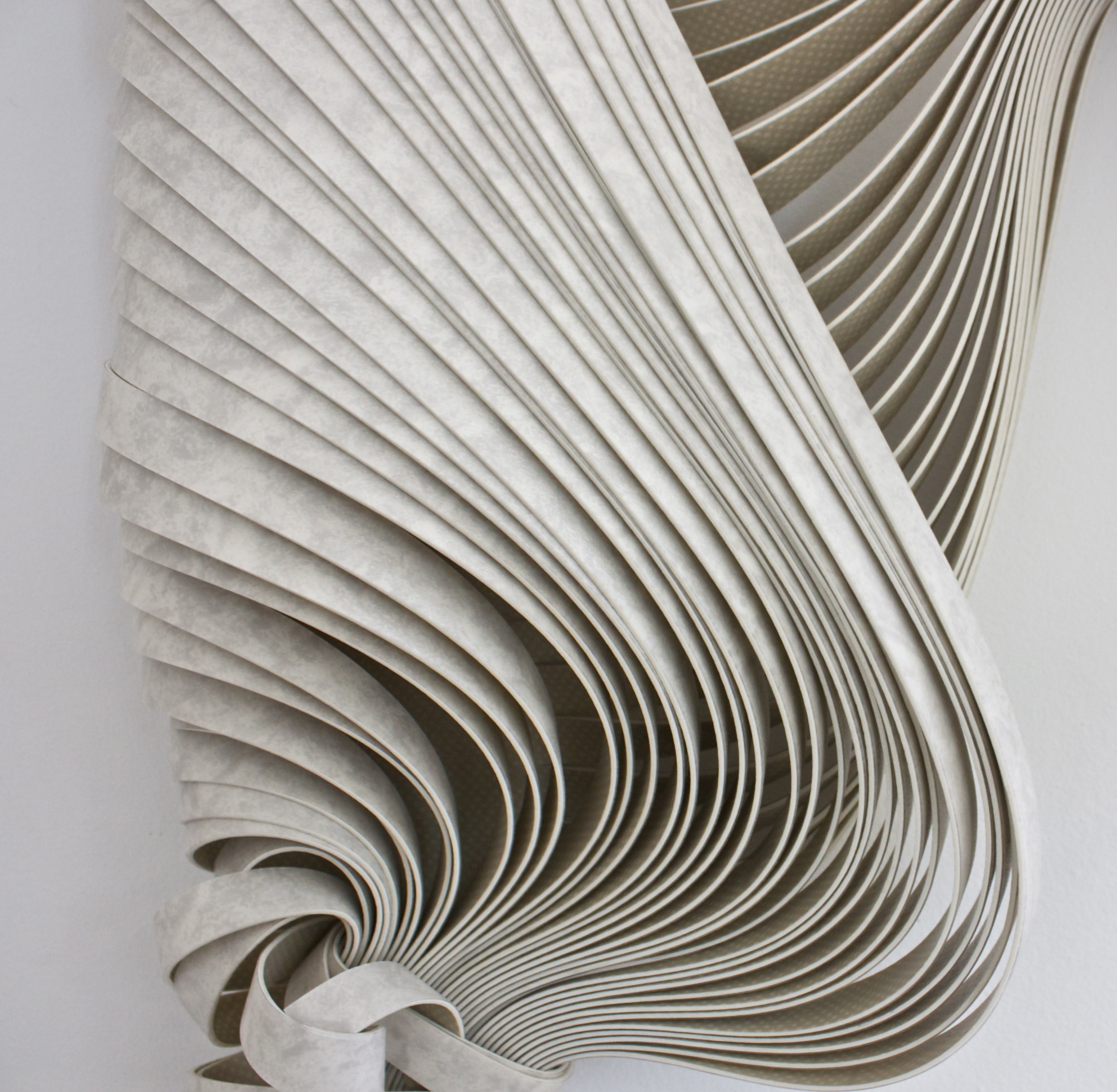
In studio photograph of one of Svea Ferguson’s linoleum sculptures.
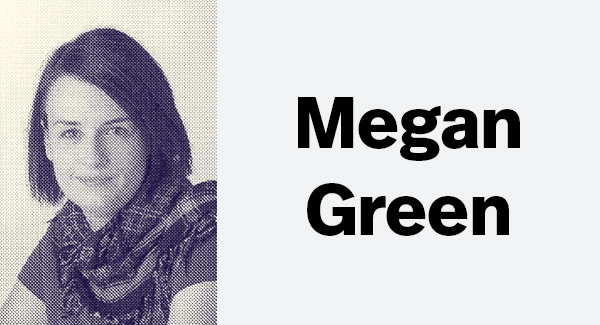
b. St. John’s, Newfoundland, based in Fort McMurray, Alberta
Megan Green was born in Newfoundland, but like many, migrated to Fort McMurray in the mid 1990s, where she spent her formative years. Following a diploma from the local college, she received a BFA from the University of Alberta (Edmonton) in 2011 and completed her MFA solo thesis exhibition The Jackalope in the Room, at the University of Waterloo in 2014. During studies at the University of Waterloo, Green completed their ‘Keith and Win Shantz Summer Internship in London (UK) with artist and taxidermist Claire Morgan and in the summer of 2014 she was included in Art Mûr’s Fresh Paint New Construction (Montreal).
Arising from an encounter with an errant deer leg on a Fort McMurray driveway, What exactly were we supposed to have learned from the fire? employs a personal anecdote to reconsider the aesthetics and narratives of oil as embodied. The work re-conceptualizes the ram-shackled plastic impermanence of the supposed landscape of ‘trailers and McMansions’ where the leg was found as spaces of new encounters with an affective geo-cultural landscape. A humorous and melancholic conflation of the strangeness and banality of a place considered dystopic and anachronistically other, yet central to petroculture studies. Originally from Newfoundland, the artist considers being at home, yet diasporic in ‘the offshore,’ and female in a space rendered masochistically.

b. Calgary, based in Calgary, Alberta
Tia Halliday was born in Calgary, Alberta. She received a BFA with distinction from the Alberta College of Art + Design, attended the School of the Art Institute of Chicago and obtained an MFA from Concordia University (Montreal). Halliday has exhibited her work in solo and group exhibitions and performance projects across Canada and Europe. Her work has been highlighted in The Globe and Mail, The Washington Post, and Canadian Art Online. Tia is the daughter of the late Canadian abstract painter Richard Halliday RCA. Tia Halliday is currently an instructor of Visual Art and Theory at the Department of Art, University of Calgary.
Tia Halliday uses performance, photography and dance as a way of physically negotiating paradigms of painterly abstraction. Her performances, or performed paintings, are a mode of generative research; to analyze, create and pose questions about the body’s relationship to painting and sculpture. Halliday physically performs and choreographs common painterly tropes under dynamically sewn fabric garments which mimic the skin of a painting. Halliday re-embodies and re-materializes the photographic documentation of her performance work through the creation of large-scale aluminum collages. Her research aims to problematize how traditional structures of orientation, both within art history, cultural discourse and institutions for the arts, inform how we come to know painting as an (embodied) practice.
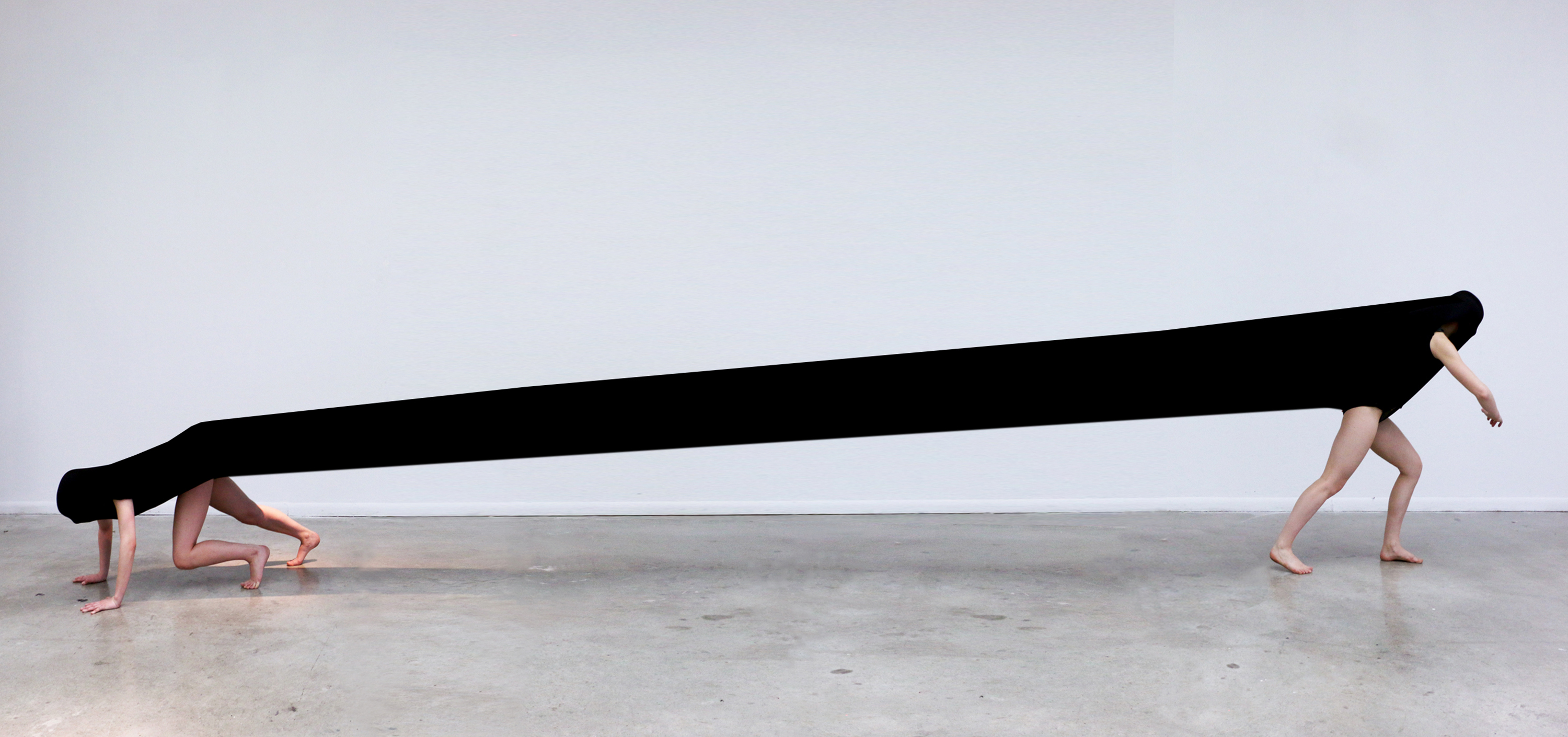
Tia Halliday's The Palpable Nature of Praxis
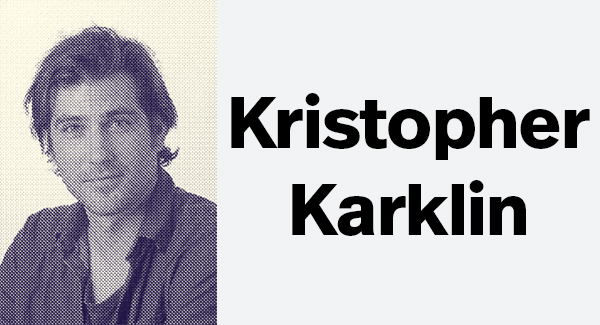
b. Lac du Bonnet, Manitoba, based in Calgary, Alberta
Born in Manitoba in 1983, Kristopher Karklin grew up in rural northern Alberta and completed his BFA at the Alberta College of Art + Design in 2007. Karklin has been the recipient of several awards including the 2012 Lieutenant Governor of Alberta Arts Award for an Emerging Artist.
Karklin’s work has been included in major museum exhibitions at the Museum of Contemporary Art, (Calgary); Art Gallery of Calgary and the Art Gallery of Alberta (Edmonton) as a participant of the 2013 Alberta Biennial of Contemporary Art. His work is held in the public collection of the Art Gallery of Alberta and the Alberta Foundation for the Arts as well as in private collections in both Canada and the United States including the distinguished photographic collection of Sir Elton John.
Home is an exploration of the discrepancy between the ideal and reality of a “home” in today’s economic climate. It is based on the experience of the recent decline of the oil economy within Alberta and the affects this decline has had on the younger homeowner demographic. The image portrays a young couple, nude and vulnerable, standing in front of a ubiquitous suburban dwelling. Once idealized as a safe haven and beacon of growth, the house now looms before its owners as a sobering symbol of seemingly insurmountable debt. Reflected in the monumental size of the work, the imagery speaks to a grave issue faced by many.
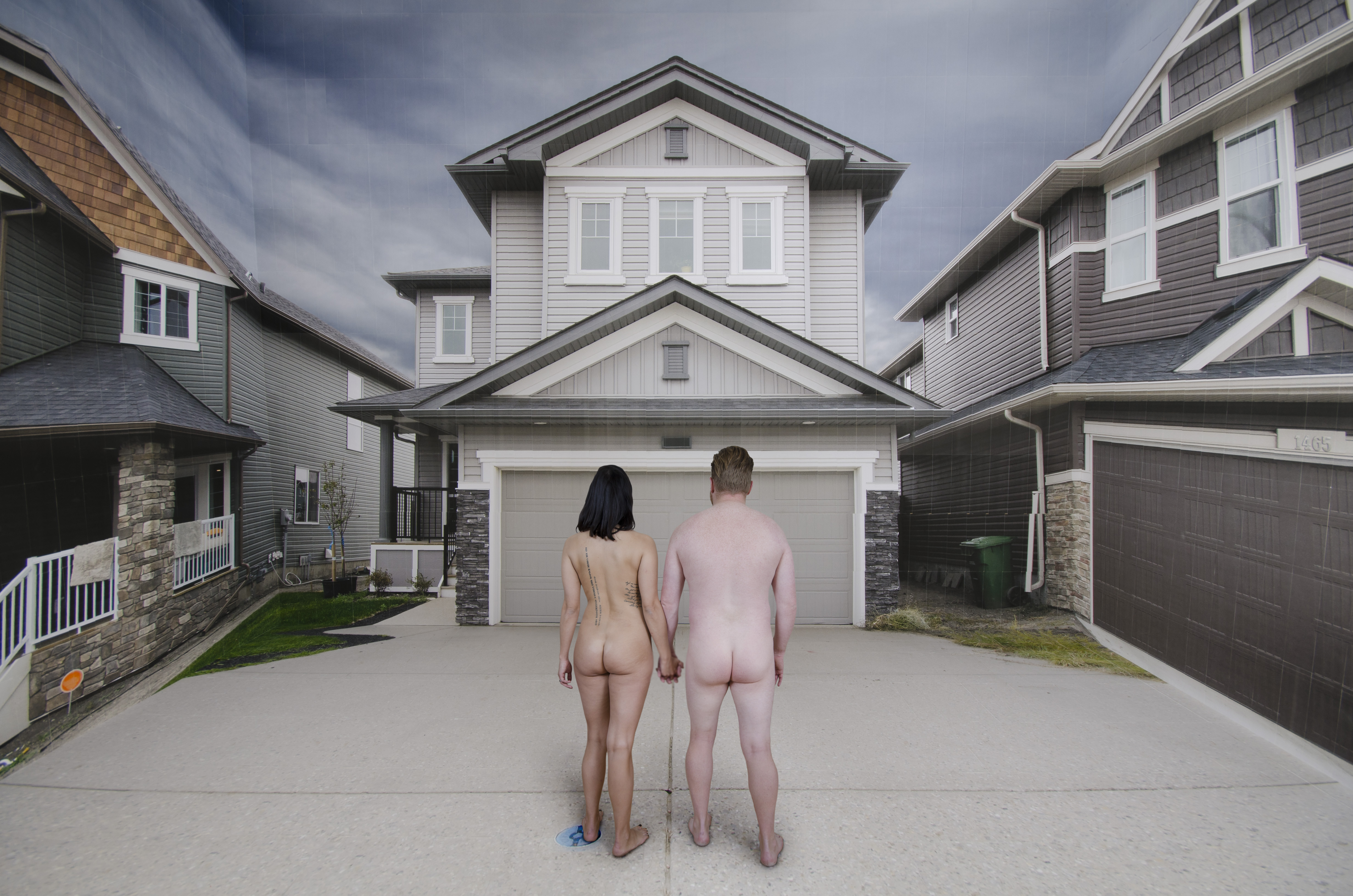
Rendering of Kristopher Karklin’s vinyl photograph Home, 2017.

b. Edmonton, based in Edmonton, Alberta
Taryn Kneteman is an artist who uses photography, printed media, performance, that integrates both objects made and found. She works to create situations where the valence of certainty is thin, to challenge complacencies of seeing and invite curiosity, wonder, and conversation.
Kneteman has participated in artist residencies and exhibited work in Canada, the USA, Germany, and China. Recent projects in Alberta include Everyday Rituals (survival tactics), an exhibition of photographs and video at SNAP Gallery in Edmonton, Common Opulence 2, an artist residency and sustainable building initiative in Peace Country and After Aurora, an unexpected structure and performance in Intersite Visual Arts Festival (Calgary).
In hospitable home is a travelling performance, on a journey to visit the diverse human landscapes of Alberta. People in different communities are invited to share tea and conversation with the artist, as a ritual of care in an unexpected sculptural space. Physical objects in the performance include fired vessels made from clay gathered throughout the province, stitched cloth, and charred wood. Approaching multivalent geographies with curiosity and openness, In hospitable home reconsiders the narratives of wilderness that stand on the edges of our stories.
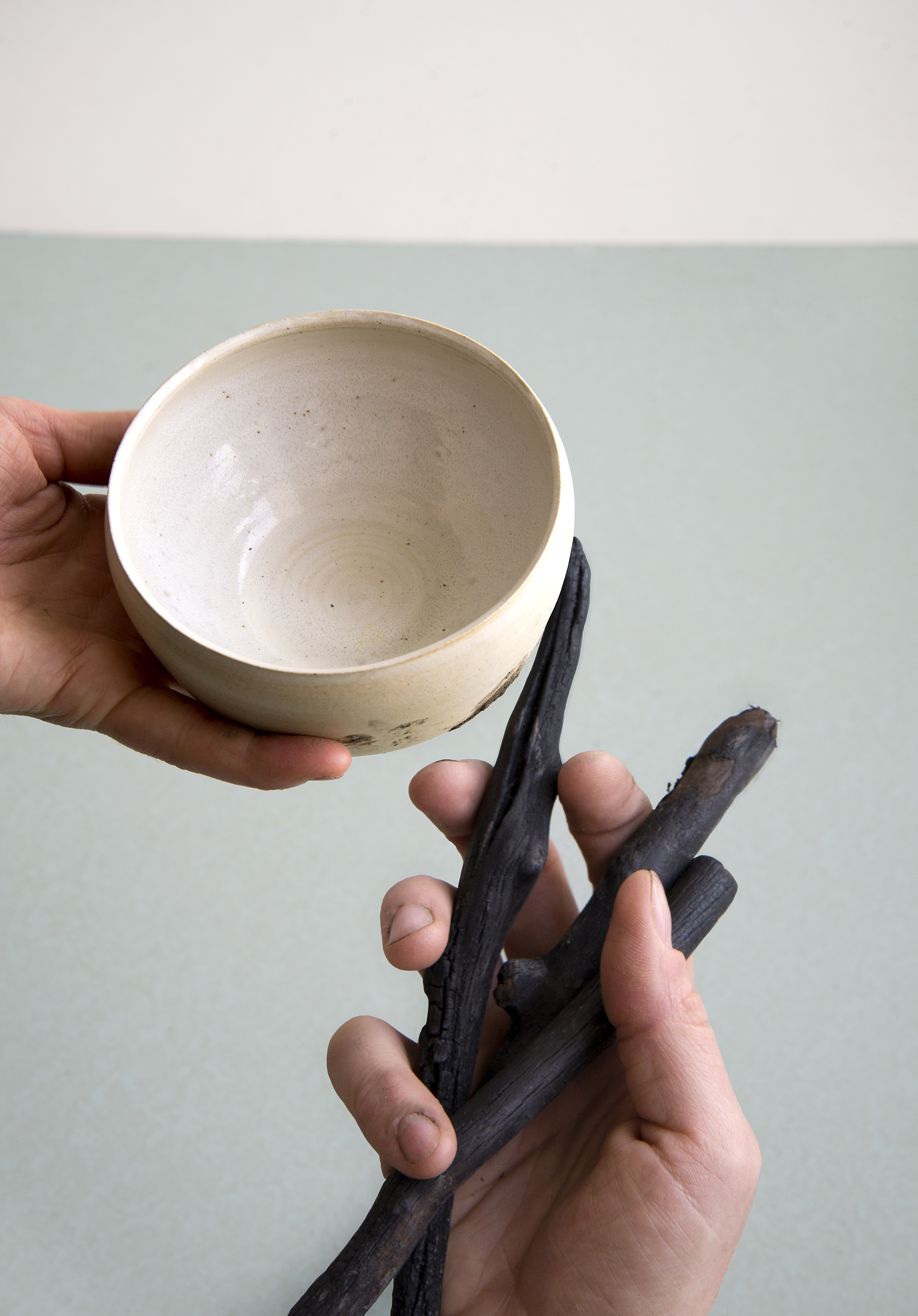
Elements from Taryn Kneteman’s performance In hospitable home, 2016-2017.
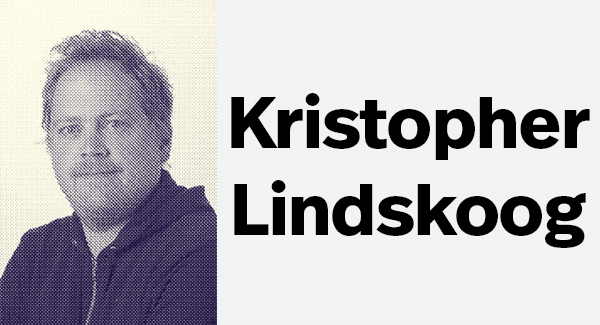
b. Edmonton, based in Calgary, Alberta
Kris Lindskoog is a multi-disciplinary artist who lives and works in Calgary, Alberta, with his wife and two daughters. He is a graduate of the Alberta College of Art + Design (Calgary) and has exhibited locally, nationally and in Europe.
Body Bottle Instrument is a drawing and sculpture project that examines the relationship between forms. Shared functions and forms are explored between breath/gas, liquid/water gas-solid-liquid, sound, breath hum cap, store, save and use. The vessel sculptures and drawings are collaged exquisite corpses that ask what are bodies? What are they for and how can I use mine?
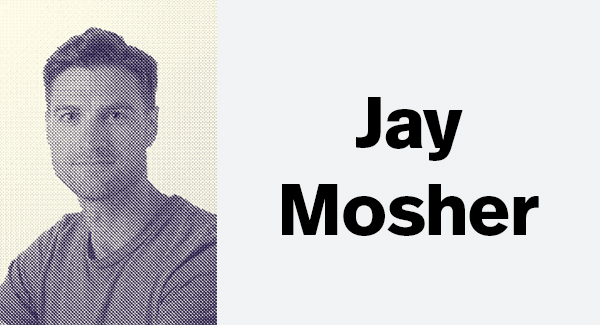
b. Red Deer, based in Calgary, Alberta
Jay Mosher is an artist based in Calgary, Alberta. He received an MFA from the Glasgow School of Art in 2013. Recent solo exhibitions include And There a Bronze Nail Stopped the Gush of Blood and Sent it Bubbling Back Inside, Harcourt House Gallery, Edmonton (2016), Brasília, Untitled Art Society, Calgary (2015). Group exhibitions featuring his work have included Future Station: The Alberta Biennial of Contemporary Art, Art Gallery of Alberta, Edmonton (2015), …Landscape, dc3 Art Projects, Edmonton (2014), Comfortably Warm, Glasgow International Festival (2014), Talisman (collaboration with Rory Middleton), The New Gallery, Calgary (2012).
Pierrot is a mixed media installation that looks at kaolin and its impact on people, nature, and history. Kaolin, the fine, soft white clay used to make original China porcelain also has health benefits for both humans and wildlife when administered orally or topically, as it is a natural toxin neutralizer. The works on display respond to these ideas, questioning postcolonial ideas around fetish, the domestication of nature, and representations of exoticism within design. The artist would like to gratefully acknowledge support from Canada Council for the Arts.

Still image from Jay Mosher’s film Pierrot, 2017.
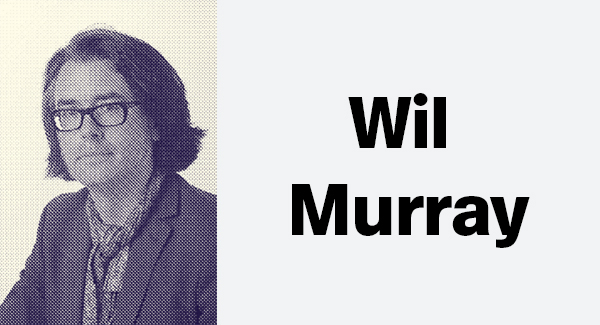
b. Calgary, based in Okotoks, Alberta/Berlin, Germany
Wil Murray studied painting at the Alberta College of Art + Design in Calgary and lives and works in both Okotoks (Alberta), and Berlin (Germany). Recent solo exhibitions include On Invasive Species and Infidelity, Art Gallery of Alberta (Edmonton); Please Boss Remember Me, VITRINE (London); Die Welt In Farben, P|M Gallery (Toronto); and Last Summer I Build A 1:8 Scale Model of Your Vagina, Staatsgalerie Prenzlauer Berg, (Berlin). His group shows include A journey from a sweeping gesture to a lasting effect, VITRINE (Basel); NOT A PHOTO, The Hole (New York City); and The Painting Project, Galerie de L’UQAM in Montréal. Murray received an honourable mention in the prestigious RBC Canadian Painting Competition in 2008, and previously exhibited in Future Station: 2015 Alberta Biennial of Contemporary Art.
My family’s circus stopped touring in the summer of 1943 because of travel restrictions brought about by the same war that dropped the Fu-Go bombs the following winter. By depicting my visits to the ten geographical venues they shared and conflating their seasonal landscapes via brush stroke, I tell a time travel story in which the circus, the balloon bomb, and I meet on the Canadian prairies. I insert my own journey between the end of the circus and the beginning of the bombs falling and in so doing, open a small space in which I can consider my own contemporary anxieties about indiscriminate violence and the sacrifices we accept in our attempt to keep it at bay.
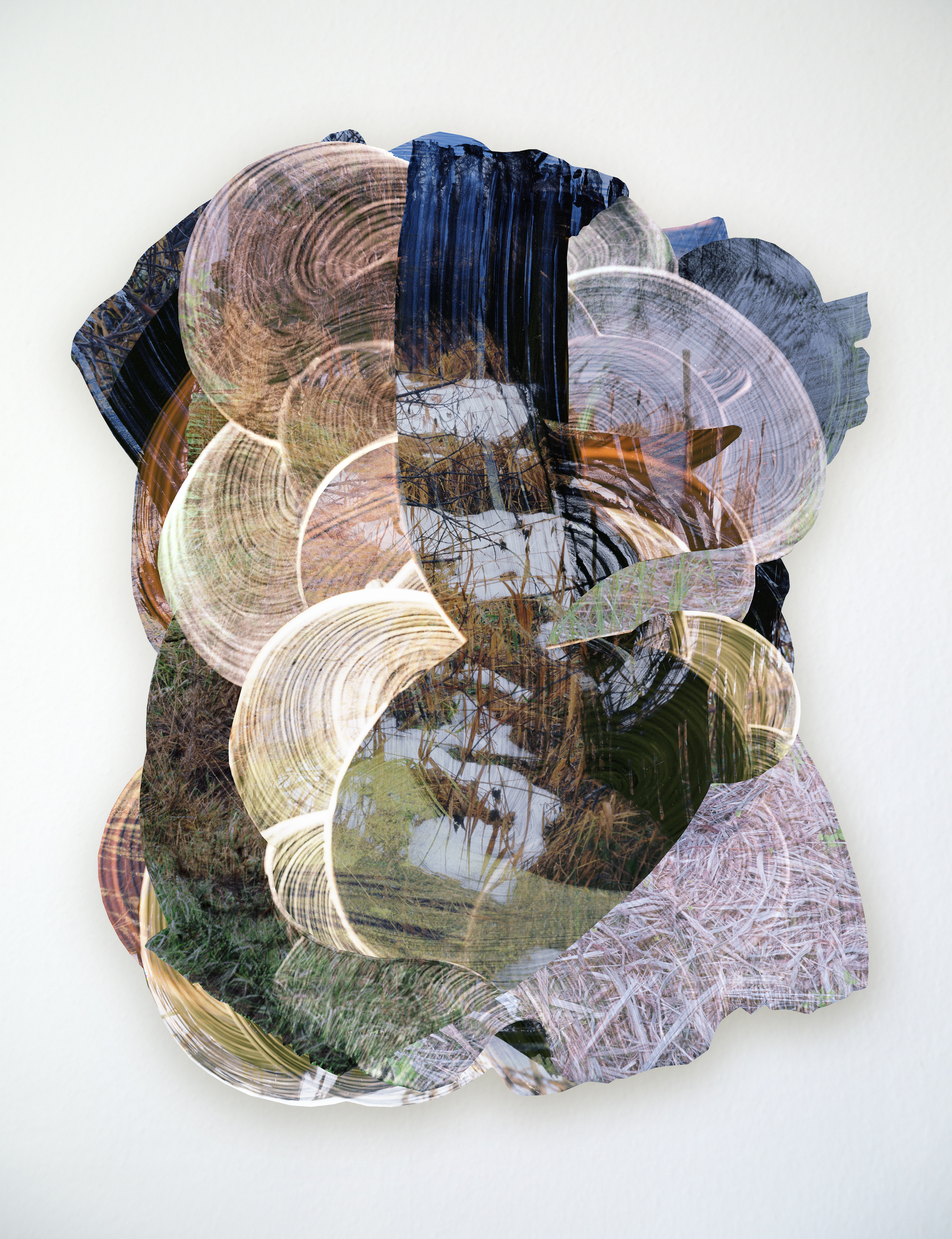
Detail from Wil Murray’s photographic series THE ONLYES POWER IS NO POWER: Ituna to Athabasca, 2017.

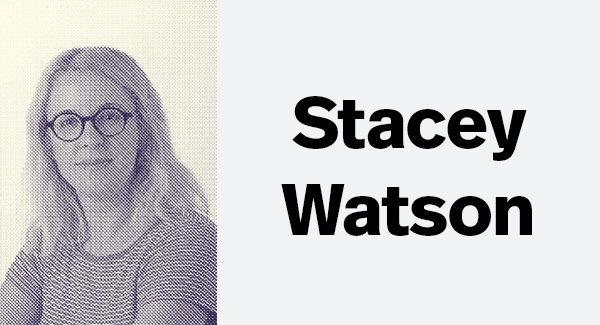
b. Brooks, based in Calgary, Alberta/Vancouver, British Columbia
& b. Washington, D.C., based in Calgary, Alberta
Justin Patterson and Stacey Watson are a collaborative duo that formed in 2003. Alongside their individual art practices and work with the Arbour Lake Sghool, they have maintained an ongoing creative exchange. Both are graduates of the University of Calgary, where Stacey received her MFA in 2004 and Justin received his BFA in 2005. Their collaborative work has been exhibited at the Art Gallery of Calgary (2003), Kulturpfeiffer, Berlin (2006), Salt Gallery, Cornwall, UK (2006) and at Kunstverein das weisse haus, Vienna (2008). They have exhibited sculptural installation work at IDEAL, Calgary (2008) and their immersive room piece entitled The Filthy Water Grotto was constructed at Art Gallery of Calgary in 2009. Leading up to the 2017 Alberta Biennial the duo are creating video works in Calgary and Vancouver B.C.
Object Vocation is a series of audio/video vignettes that animate the discarded and domestic into a series of anti-narratives. Banality provides the backbone for a universe where subtle menace and abjection mingles with humor. Patterson and Watson respond directly to the things in their respective environments and playfully cull found materials and half formed sculptures from the detritus of their individual studio practices and everyday lives. By giving static objects absurd tasks throughout the videos, the artists attempt to reassign the fate of the overlooked in cycles of growth and decay. Patterson and Watson locate the boundlessness of their instinctive exchange in the compost of the object world.
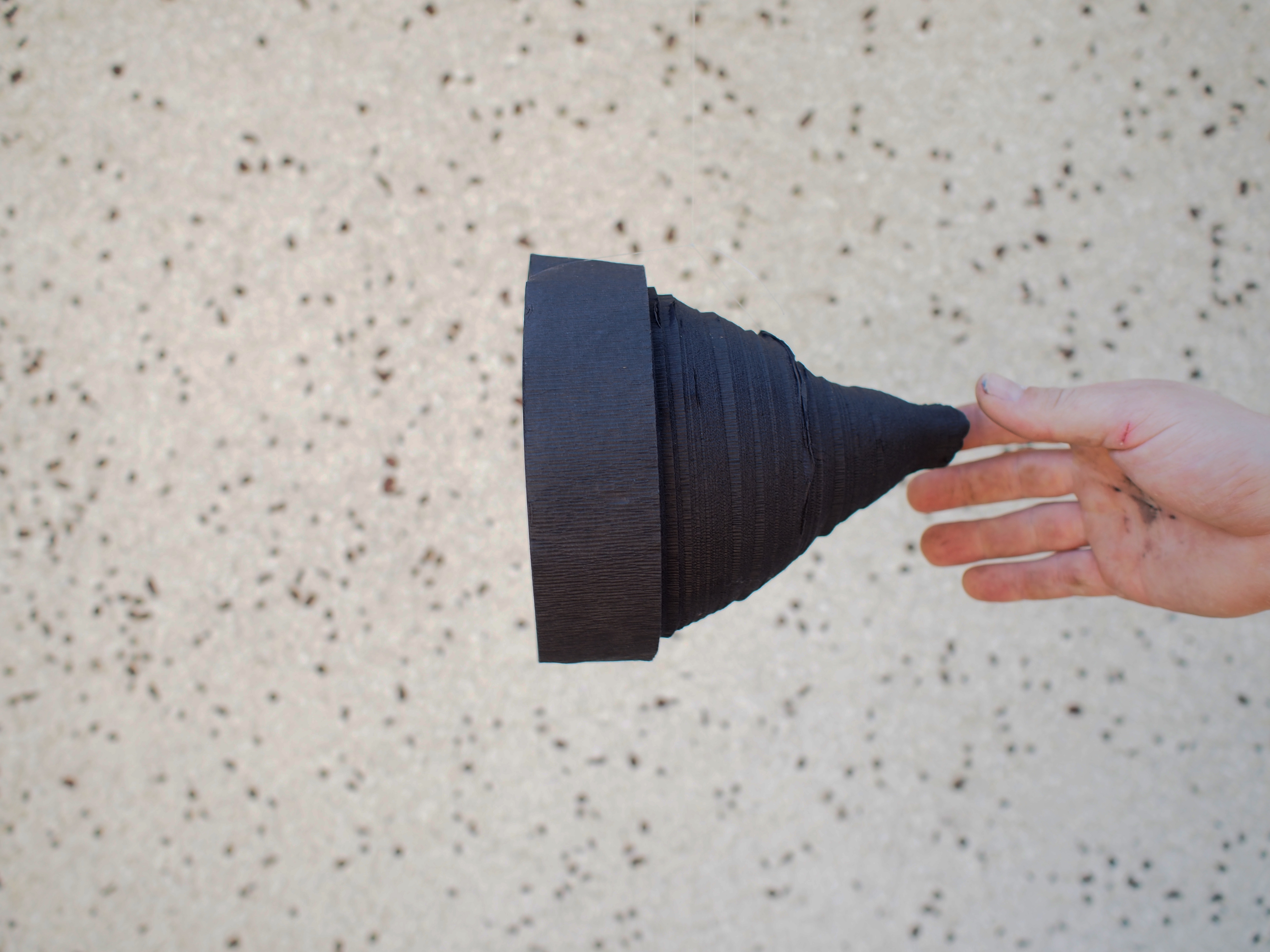
Still image from Stacey Watson and Justin Patterson’s film Object Vocation, 2017.
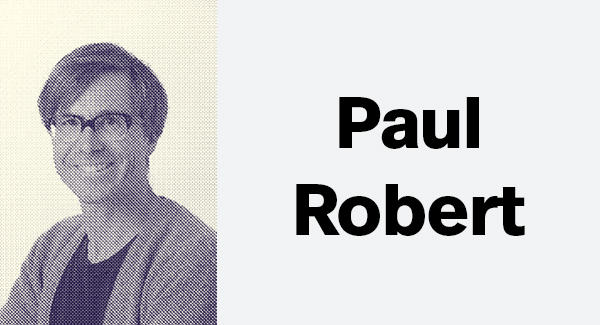
b. Calgary, based in Calgary, Alberta
Paul Robert is a multi-media artist whose projects aim to reveal the hidden assumptions that allow technological modes of thought to seem self-evident. He received his MFA from Nova Scotia College of Art & Design (Halifax) in 2005 and a BFA from the Alberta College of Art + Design (Calgary) in 2002 where he currently teaches in the department Media Arts. His work has been exhibited in Alberta, Halifax, and abroad. His writing has appeared in publications such as Border Crossings and Fuse.
In 1974, the Swiss artist/bookbinder Franz Zeier published a book called Papier: Versuche Zwischen Geometrie und Spiel [Paper: Balancing Geometry and Play], a guide to creating geometric forms with paper. It is richly illustrated with photographs of Zeier’s own prolific and steadfastly rigorous experiments. While the forms themselves are the result of a rich sensorial process, their implicit goal is to downplay their material qualities, foregrounding instead the abstract mathematical principles to which they conform. The mystery of the interpenetration and interdependence of the physical and metaphysical, of things and information is even more pronounced in the age of virtual objects and spaces. This project uses computer vision to blur the boundary between pictorial and physical space, between information and the viewer’s body.
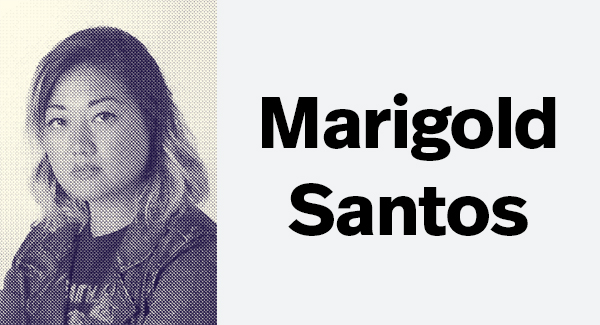
b. Manila, Philippines, based in Calgary, Alberta/ Montréal, Quebec
Marigold Santos pursues an interdisciplinary art practice involving drawn, painted, and printed works, sculpture, animation, and sound. She holds a BFA with Honours from the University of Calgary, and an MFA from Concordia University in Montréal. As a recipient of numerous awards and grants from the Canada Council for the Arts, the Alberta Foundation for the Arts, and the Conseil des Arts et des Lettres du Québec, she continues to exhibit widely across Canada. She is represented by Jarvis Hall Gallery and Galerie D’Este. She currently divides both residence and practice between Calgary and Montréal.
A shrouded figure levitates in a space void of specificity, a cloaked giant. The colour-field realm connotes an hour of magic, the vastness suggests possibilities. Surrounded by hundreds of golden amulets whose density decreases towards ascension, the figure appears buoyant yet magnetic with mass, the intersection between weightlessness and gravity. Within this interstitial space, the body is fragmented, and is one and the same with the unraveling garment. Informed by a landscape consisting of personal experience, social politics, folklore, pop culture, and science, an invented mythology is created, a visual language that favours a selfhood that is unfixed, porous, multiple.
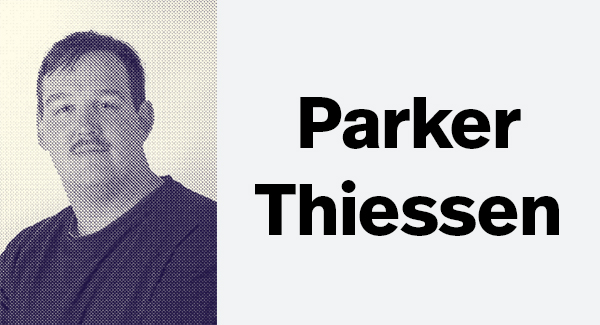
b. Beaverlodge, based in Edmonton, Alberta
Parker Thiessen is a filmmaker, musician and graphic designer originally from Beaverlodge, Alberta, with an interest in experimentation, DIY and exploring the bizarre or unusual. He attended the Design and Motion Image Program at MacEwan University Centre for the Arts (Edmonton). Through his work, Parker experiments with original and found sounds and visuals. Under various projects, he has released more than ten albums and he is co-founder of experimental label Pseudo Laboratories. He has previously exhibited with the Art Gallery of Alberta and Enterprise Square Galleries as part of SONAR: Sound Explorations by Edmonton Artists, and Do It Yourself: Collectivity and Collaboration in Edmonton.
A film, inspired by a soundtrack, inspired by a non-existent film of the same name, Midnight Oscillations, is a story of inter-dimensional travel and assimilation. As much fantasy as it is sci-fi, shown here in the context of this exhibition is an excerpt trailer from the full film.

Still image from Parker Thiessen’s film Midnight Oscillations (an excerpt), 2017.
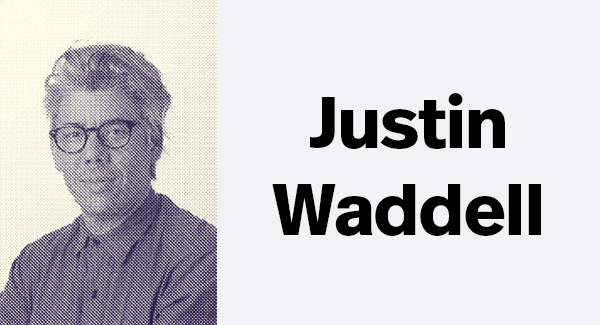
b. Toronto, Ontatrio, based in Calgary, Alberta
Justin Waddell graduated from the Ontario College of Art and Design and received his MFA in Integrated Media from the University of Windsor in 2003. He has worked in various capacities at several artist-run centers, festivals, galleries, and magazines in Canada including Prefix Photo, Trinity Square Video, Lola Magazine, the Art Gallery of Ontario, the New Gallery, and the Gendai Gallery at the Japanese Canadian Cultural Center. He has served as the Director of Programming at YYZ Artists’ Outlet, the Director of the Stride Art Gallery Association, and more recently as a Board Member of the Calgary Cinematheque, M.S.T. Performative Art Festival, and as a founding Board Member with the every-age art and music venue, Local Library in Calgary, Alberta. His work and research is rooted in the development of a personal narrative of experimentation and process. Right now, he is interested in escapism. Waddell currently lives in Calgary, Alberta, where he is a Permanent Instructor in the School of Visual Art at the Alberta College of Art + Design.
Float in Space and Drift in Time, consists of small, carved steatite sculptures arranged on a reflective, lowered platform alongside a custom film projector with a 16mm looping film and un-synched soundtrack. The colour film has been hand-processed and dyed to create an abstracted image of one of the steatite sculptures as light moves over its surface. The resulting image is an abstracted and ambient field of colour with reference to a mountainous and rocky landscape. The soundtrack is composed of tuned electric guitar, feedback, drones, percussion, field recordings, and is intended to invoke a spirit of deep time and lost space.

Still image from Justin Waddell’s film Float in Space and Drift in Time, 2017.
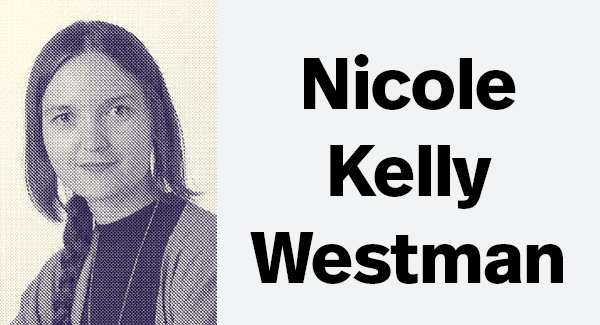
b. Red Deer, based in Calgary, Alberta
Nicole Kelly Westman is a visual artist of Métis and Icelandic descent. She grew up in a supportive home with strong-willed parents – her mother, a considerate woman with inventive creativity, and her father, an anonymous feminist. Her work culls from these formative years for insight and inspiration. Existing beyond the binary definitive of a specific medium, Nicole Kelly Westman, has had the pleasure and privilege to be curated into exhibitions by remarkable females including; Peta Rake, Kristy Trinier, Kimberly Phillips, Ginger Carlson, Leila Timmins, and cheyanne turions. Westman holds a BFA from Emily Carr University and is the current Director of Stride Gallery (Calgary).
Employing coloured gels sourced from film and photography, the phrase “if you weren’t there” oscillates between colour palettes traditionally used to manipulate an emotional response from a viewer. Two sleek modernist chairs are positioned in front of a projection. A vacant chair may be filled by one’s imagination or the physical presence of another, depending on the individual and their personal discretion. An artist book comprised of dual eulogies alludes to the emotional labours expected of cultural practitioners. Together, these gestures position familial labour in correlation, contention, and conversation with artistic labour.
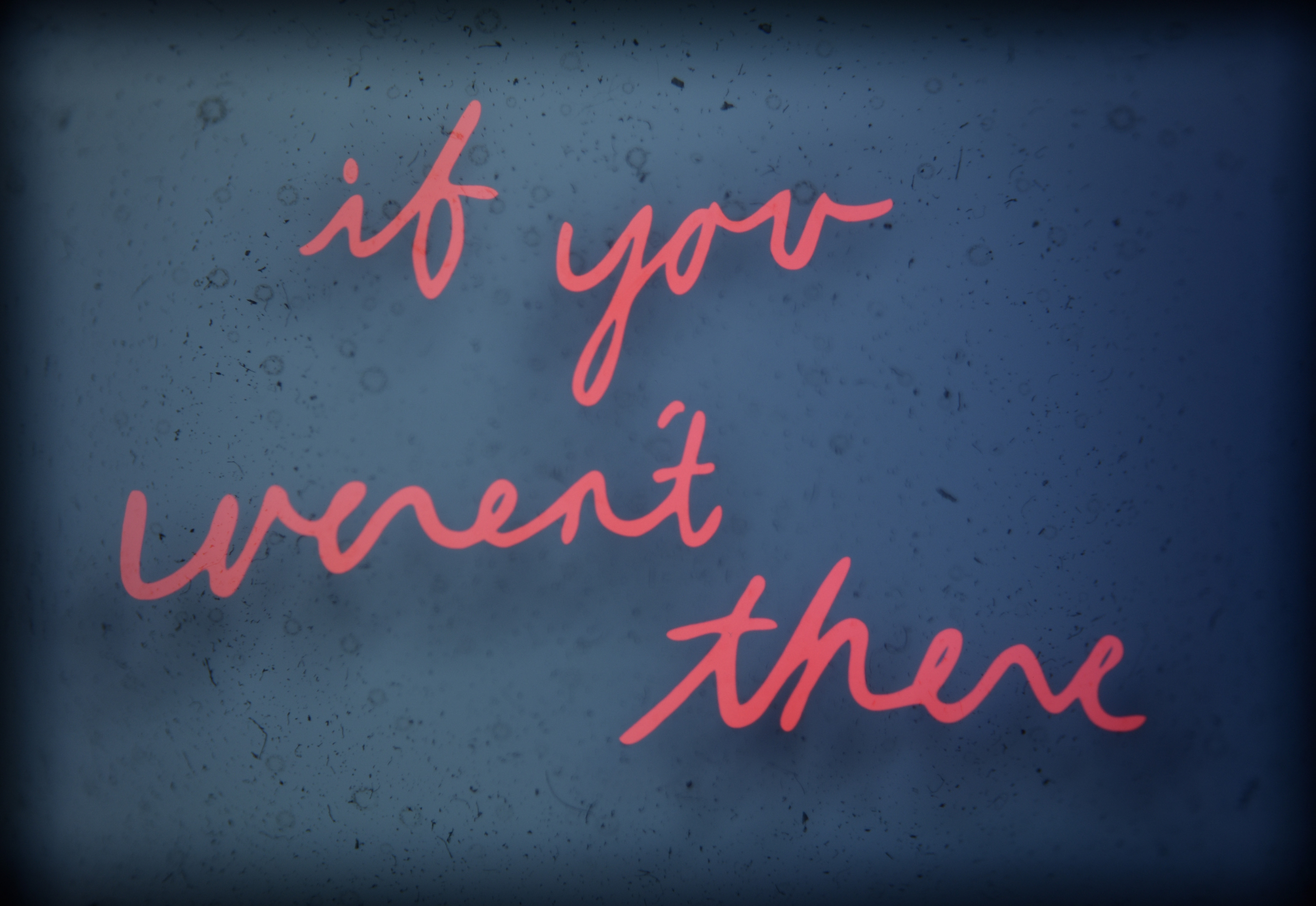
Still image from Nicole Kelly Westman’s film if you weren’t there, 2017.